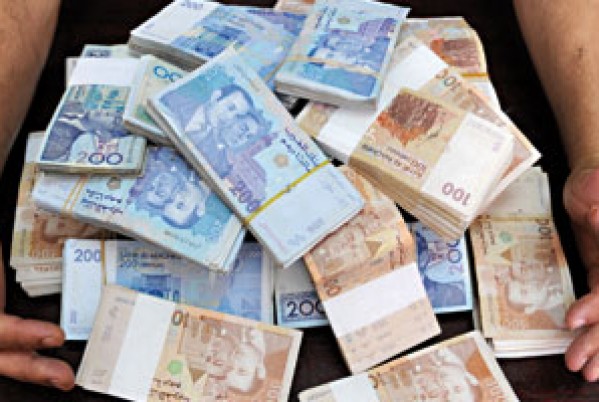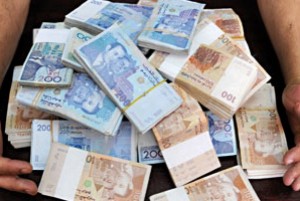Borzou Daragahi
Financial Times
Morocco may be entering a growth phase, after a seven-year period during which its economy struggled but avoided the turmoil that has affected some of its Arab neighbors.
Having previously notched up double-digit growth rates, the North African country was hit in close succession by the global financial crisis, the 2011 Arab uprisings and prolonged weakness among its European trading partners.
However, Abdellatif Jouahari, Morocco’s central bank governor, said the country was now on the “right path,” as he pointed to a rise in foreign reserves, modest economic growth and increased activity in important non-agricultural sectors such as textiles, automotive and aeronautics.
“We have been able to go through this period with the least possible damage,” Jouahari said in a rare interview from the bank’s headquarters in the capital, Rabat. “Morocco is not associated with one single product, like oil or steel. We have a bit of everything … that helped us get through the difficulties.”
Alone among Arab states, Morocco responded to the Arab uprisings by granting permits to demonstrators and implementing constitutional reforms that propelled to power a government led by moderate Islamists, although King Mohammed VI holds ultimate authority over critical matters of state.
Such stability allowed for the implementation of subsidies and pension reform that helped to improved Morocco’s fiscal balance sheet.
In contrast to Libya, Egypt and Tunisia, where revolutions gave way to political chaos and economic stagnation, Morocco has charted a more steady path.
Its GDP growth since 2008 has been tepid at 2.5 percent, largely because of poor agricultural output. But there has been better news elsewhere, with the budget deficit down from 7.3 percent of GDP in 2012 to 5.4 percent this year. Jouahari said he hoped it would fall to 3 percent by 2017.
Subsidies expenditures have fallen from 6 percent of GDP in 2012 to 3 percent, while inflation has remained low, averaging less than 2 percent over the past 10 years. Foreign reserves have risen recently from four-months worth of imports to five.
This month, Morocco’s central bank cut interest rates by 25 basis points to 2.5 percent.
Capital Economics, a London-based consultancy, cited increased tourism arrivals, export growth and rising manufacturing jobs as reasons to predict overall growth of 4.5 percent to 5 percent in the fiscal year ending 2016.
“We have seen in the long term that non-agricultural sectors had 5 percent growth on average,” Jouahari said. “When you do the balance of payments analysis, you see there are good opportunities for growth in Morocco.”
He noted that Morocco was the only Arab country exposed to the Arab Spring that had qualified for a precautionary credit line from the IMF – a testament to its stability.
At the same time, its economy has remained fragile, and heavily dependent on remittances by laborers working in Europe. Public debt remains relatively high at 64 percent of GDP, up from 40 percent in 2011.
Economists have also estimated that Morocco’s occupation of Western Sahara, unrecognized by the U.N., has cost the country up to 10 percent of GDP annually. Rabat subsidies the impoverished territory’s economy and the occupation also contributes to its outsized defense budget of 5.1 percent of GDP.
But the country’s relatively peaceful political and economic reform have opened the space for modernization, providing perhaps a more appropriate path for Arab countries than the oil-rich Gulf states.
Over the past four years, the number of Moroccans with bank accounts has increased from 28 percent to nearly 66 percent as increased competition and regulatory changes encouraged banks to seek out new customers.
The central bank has also done away with minimum deposits, abolishing fees for day-to-day bank use and allowed the national postal service to create a bank, which has signed up 5 million customers.
Morocco also signed a deal last month to use its recently upgraded presses to print money for other countries – an innovative way of leveraging existing infrastructure to generate revenue.
“We have highly qualified engineers, production line supervisors of high quality and we recently spent $111 million upgrading our production lines,” Jouahari said.








